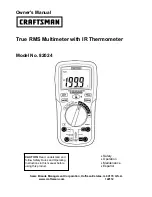
3028
Turbo
Statistical Multiplexer
2-2
154001UA
This chapter explains the different methods you can use to configure, monitor
and control the multiplexer operations. It provides step-by-step instructions for
each method and summary areas for quick reference.
SUPERVISOR
SUPERVISOR
SUPERVISOR
SUPERVISOR
SUPERVISORY
YY
YY
FUNCTION
FUNCTION
FUNCTION
FUNCTION
FUNCTION
OVERVIEW
OVERVIEW
OVERVIEW
OVERVIEW
OVERVIEW
OVERVIEW
OVERVIEW
OVERVIEW
OVERVIEW
OVERVIEW
When the multiplexer is attached to a DCX multiplexer, there are three ways to
operate the supervisory functions:
1. The front panel keys and LCD display.
2. A terminal connected to the supervisory port.
3. A terminal connected to any asynchronous channel port enabled for the
supervisory function.
4. A terminal connected via the DCX network to an enabled supervisor
channel.
When the multiplexer is being used in Point-to-Point applications, there are three
additional operating methods:
1. The remote front panel interface.
2. A terminal connected to a remote supervisory port.
3. A terminal connected to a remote asynchronous channel port enabled for
the supervisory function.
Any of the terminals in Figure 2-1 may be used to access supervisory functions in
either 3028 Turbo (CTS 2031 Turbo). In addition, when the multiplexer is used in a
DCX
network (Figure 2-1) any attached terminal can access the DCX supervisory
functions remotely. Refer to the
DCX 850 Installation and Operation Manual
, 2985-
A2-GN30, for procedures.
Note
Note
Note
Note
Note
In general only one terminal, local or remote,
may be signed on as supervisor at the multiplexer
at any given time. Supervisory functions at the
front panel, however, may be carried on concur-
rently with a terminal supervisor.
















































